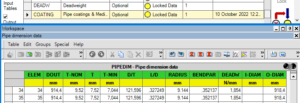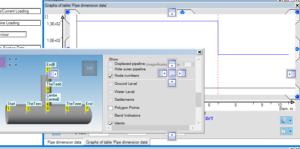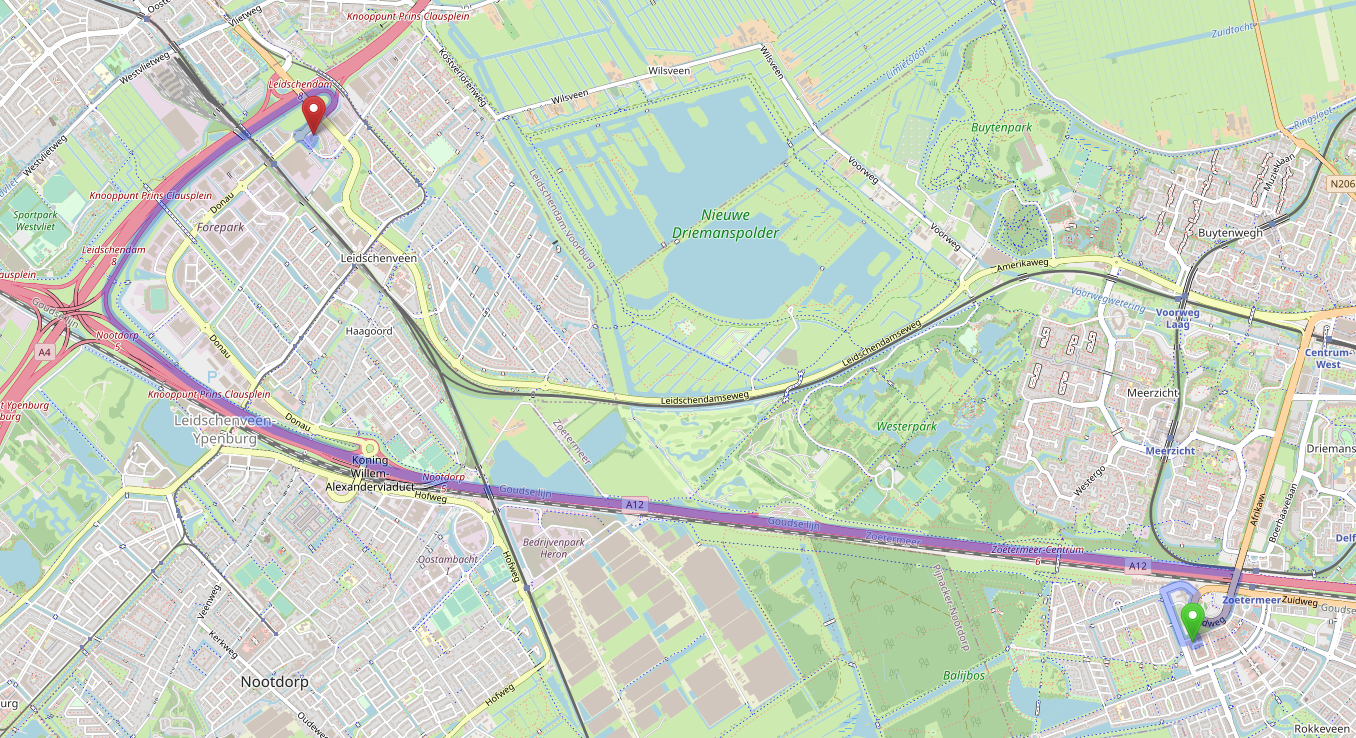
 Ple4Win
Ple4Win

Patch for Ple4Win 4.7.1 released
After the release of Ple4Win version 4.7.1 we noticed two errors in the program which were sufficiently severe to justify releasing a patch for this version.
The patch can be downloaded here. Please note that this patch is only meant to patch Ple4Win version 4.7.1.22112. It only works correctly if that specific version has already been installed on this computer. The patch setup does not check whether the correct version is installed, it will overwrite files of other versions as well, leading to a corrupt installation.
Alternatively, the corrected full setup of Ple4Win Professional 4.7.1 can be downloaded here.
The issues fixed are:
- An error in loading Design Function 1 data which prevented defining a parent database (for calculations in phases) and failed to show the project description.
- An error detecting the decimal seperator during import of PCF files if computer and file use different notations (e.g. a comma with the computer and a dot in the file).
Ple4Win 4.7.1 released
We are happy to announce the release of Ple4Win version 4.7.1. This version is a service release, focusing on enhancements, stability improvements and bugfixes. For a detailed description of all that is new and changed, please see the online change log. As always, we advise customers to upgrade to the latest version, even if no issues have been encountered using version 4.7.0. Click here to download Ple4Win Professional 4.7.1 right away. The key highlights of this new release are:
- Improved and expanded deadweight calculations, including coatings and transported media.
- Design Function 3 now uses longer, more descriptive notices.
- Numerous small improvements throughout the whole program.
- Quite a lot of bugs have been fixed.
Improved deadweight calculations
As the Deadweight input table had been expanded in the previous version and the Coatings input table had been introduced then as well, the newly available additional data is now used throughout the program. Therefore, the soil model wizard in Design Function 3.2 now uses the outside diameter as defined by the COATING table. Also, in Design Function 4.1 (wave & current loadings) the input tables AIRWGHT and OUTDIAM are no longer used, during calculations the already calculated deadweight and diameter changes due to coatings are used instead. Furthermore, reporting of the total inner and outside pipe diameter in table PIPEDIM has been added in case coatings are specified.

Longer notices in Design Function 3
In the previous version in Design Function 4 (Loadings) all errors, warnings and messages were replaced by new-style errors, severe warnings, warnings, informational messages and messages. The same has now been done for Design Function 3 (Pipe and Soil Data, Model Boundary) in this version. The notices now are longer and more descriptive. In future releases this type of messages will also be rolled out to all remaining design functions.

Numerous small improvements
Throughout the whole program, a lot of improvements have been made and new functionality has been added. Some examples are:
- Updated soil wizard soil parameters to NEN 3650-1:2020.
- Improved the soil wizard’s step change detection (for required profile assignments).
- Single graph’s now show a vertical dotted line at the location of weak elements.
- With mitre bends, errors in segment lengths are better described (including length suggestion).
- PCF import now uses a better ident naming, it can handle multiple pipelines in one file and can import multiple files belonging to a single project.
- Improved user interface, such as navigating in tables, docking panes and keyboard shortcuts.
- New installer and signed installation files.

Office relocation
In December 2022 the office of Expert Design Systems will move to a new location. The new address is:
Loire 186
2491 AM The Hague
The Netherlands
Only the postal address / visiting address will change, both the telephone number (+31 70 3902386) and the e-mail address (info@eds-ple.nl) remain unchanged. See also the announcement on our website.
Courses for Ple4Win users
The performance, accuracy and speed of a project calculated using Ple4Win depends for not a small part on how the project is modelled. More often than not, a good pipeline model has greater benefits than e.g. a faster computer and may prevent lots of calculations on model variations. We are providing for a course on the art of making a good functional pipeline model. This half-day course is primarily intended for experienced users. For more detailed information, call +31 70 390 2386 or mail to info@eds-ple.nl. We also offer courses for inexperienced users and dedicated training for individuals or small groups, focused on specified wishes of the attendees and/or going into details of specific problems the attendees have encountered. The combination of a course together with a project to be calculated is also possible. Again, contact us for more information.
Ple4Win forum
For support or advice, please visit the Ple4Win forum. There you can also read the FAQs, tips & tricks, report your findings or tell us your views.
EDS is moving
On December 8, 2022 Expert Design Systems will move to a new location.

(c) OpenStreetMap contributors
The new address is:
Loire 186
2491 AM The Hague
The Netherlands
As the new location is not very far from the original location, the telephone number does not change. The e-mail address remains the same as well.
We invite you to visit us at our new location.
EDS is now part of the BT Engineering Group

We are glad to be able to announce that we have become a part of the BT Engineering Group, together with BT Geoconsult and r+k Consulting Engineers. This is a logical step to ensure the continuity of our company and the program Ple4Win and is a boost for the further development of the software.
EDS remains an independent company and continues to deliver the software to current and new clients.
BT Engineering Group will invest in the future of our software package, enabling us to develop improvements and new functions. We improve the existing functionalities and add new ones, e.g. input-output interfaces with common 3D models and updates to the calculation kernel.
At short notice you will hear more about this in our next release announcement.
PleEdu4Win 4.7.0 released
The educational PleEdu4Win version 4.7.0 has been released. This program is a functionality-reduced version of the professional Ple4Win program.
PleEdu4Win can be downloaded and used freely to gain a good insight into what the fully-featured Ple4Win program can do. Note however that this program may not be used for any actual pipeline projects as it is limited in scope and functionality and calculation results are not verified.
The new version 4.7.0 contains all improvements, modifications and adaptations of the professional Ple4Win version 4.7.0, where applicable.
The main highlights of the new release are:
- Deadweight table extended
- Deadweight calculation added
- WARNING table replaced by NOTICES table
- Longer notices texts in Design Function 4
- Element-based data representation
- Speed improvements
- Streamlined the program UI
Ple4Win 4.7.0 released
Ple4Win version 4.7.0 has been released. This version contains new import possibilities, new calculation functionality as well as a number of improvements, modifications and adaptations. For a detailed description of all that is new and changed, please see the change log.
The key highlights of this new release are:
- The Soil Model Wizard has been updated to the NEN3650-1:2020 norm.
- Pipeline Configuration Files (*.pcf) can now be imported.
- The deadweight table is extended to 4 columns.
- The deadweights can now be calculated automatically.
- New, longer and better understandable notices introduced in DF4.
- A lot of program features have undergone improvements.
- Quite a lot of bugs have been fixed.
Soil Model Wizard updated to NEN3650-1:2020
The main modifications are as follows:
- The angle of internal friction φ of the soil is no longer converted to a so-called effective angle of internal friction, but remains as is specified by the user.
- The conversion of the Young’s modulus E of the soil has been adapted to the way descibed in the new NEN 3650 version.
- The formula for the neutral soil load has been extended for pipelines with large diameters.
- To the loading coefficients Kq and Kc , Kcu in the formulae for the horizontal bearing capacity of the soil as follow from the graphs in fig. C.14 correction (model) factors have been applied: 1.0 for Kq and 0.85 for Kc , Kcu .
PCF file import
A new program module has been added to Ple4Win. If this ‘E1’ module is licensed the program now can import pipeline configurations through the Isogen PCF file format. This pipe component format file can be generated by a variety of pipeline and piping design programs such as AutoCAD Plant3D, Intergraph Smart 3D, PDS, CADWorx etc.
This import facility converts the pipe data contained in *.pcf file into input table data for Ple4Win. This first version of the new functionality generates data for the ‘Pipeline origin’, the ‘Pipeline polygon points’ and the ‘Outer diameter’ input tables.
Please note that the PCF file format is also used for piping, Ple4Win will only import pipe parts that can be used by the program. Irrelevant components and components which the program cannot model are ignored.
This import functionality will be expanded in future versions of the program. Subsequent versions will allow the import of more data into Ple4Win.
Deadweight table extended
In the previous versions the entered data was either interpreted as above and under water deadweight or as step changes in (above water) deadweight, as indicated by a Yes/No column. Now, that last column has been replaced by two new columns. The first two columns now define the deadweight above water level, the second two columns the deadweight under water. In both cases step changes in deadweight now can also be defined.
Deadweight calculation
When no data is provided in the Deadweight table, the deadweight can be calculated when sufficient additional information is available. At least the weight of the pipeline material should be known. When the pipeline is submerged, the weight of water must also be provided, to calculate buoyant forces. The weight of the medium can also be taken into account. Upto eight (internal and/or external) coatings can be defined at any location of the pipeline, their weights are also included in the calculation of the deadweight.

Longer notices texts in Design Function 4
In the previous version the Notices table was introduced as successor for the Warnings table. Starting with this version the new, extended possibilities of the Notices table are actually used. All error messages, warnings and normal messages in Design Function 4 have been replaced.
Now longer, better formatted texts can be displayed both in the Notices table and in the message pane. Also the new categories “severe warnings” (warnings that cannot be ignored and have to be mentioned and explained in reports) and “informational messages” (messages that are not deleted when saving the project) have been added.
In future releases this new type of messages will also be rolled out to all other design functions.
Courses for Ple4Win users
The performance, accuracy and speed of a project calculated using Ple4Win depends for not a small part on how the project is modelled. More often than not, a good pipeline model has greater benefits than e.g. a faster computer and may prevent lots of calculations on model variations. We are providing for a course on the art of making a good functional pipeline model. This half-day course is primarily intended for experienced users.
For more detailed information, call +31 (0)70 390 2386 or use the contact form.
We also offer courses for inexperienced users and dedicated training for individuals or small groups, focused on specified wishes of the attendees and/or going into details of specific problems the attendees have encountered. The combination of a course together with a project to be calculated is also possible. Again, contact us for more information.
Ple4Win forum
For support or advice, please visit the Ple4Win forum. There you can also read the FAQs, tips & tricks, report your findings or tell us your views.
EDS has moved…
After more than 40 years at the current address in Rijswijk, The Netherlands, Expert Design Systems has moved to a new location.

The new address is:
Röntgenlaan 3
2719 DX Zoetermeer
The Netherlands
As the new location is not very far from the original location, the telephone number does not change. The E-mail address remains the same as well.
We invite you to visit us at our new location if and when Corona restrictions allow it.
Geometrically non-linear effects (string theory)
This post is the first of a new category of application scope examples for Ple4Win. The emphasis of these examples is on the theory behind the program. See the starting page for more information.
Geometrically non-linear effects
Multiple loads working on a pipeline can result in vastly different results depending on the calculation method used. It is important that the user is aware of this. One important point here is the difference between geometrical linear calculations and geometrical non-linear calculations.
To clarify the difference between those two calculation methods a horizontal beam supported at one end by a hinged support and at the other end by a roller support is used. At the roller support end a pulling force is applied.

So both gravity (deadweight) and pulling force are acting on the structure. More about the theory behind the two calculation methods and the results in both cases can be found in the full article.
Ontwerper technische EEM-applicaties gezocht
Ons zusterbedrijf r+k raadgevend ingenieursbureau zoekt per direct een ontwerper technische EEM-applicaties. Deze functie heeft direct te maken met de (door)ontwikkeling van Ple4Win.
Ben jij een civieltechnisch of werktuigbouwkundig ingenieur met professionele passie voor software modellen?
En bijt je je graag vast in wiskundige problemen? En lijkt je werken aan Ple4Win interessant? Bekijk dan de vacature bij r+k raadgevend ingenieursbureau en solliciteer erop.
Calculations on a stage truss
A new example has been added to our ‘beyond the box’-category of application scope examples for Ple4Win.
This one is about modeling a truss used in e.g. theaters and music halls. Calculations on this model have been performed and compared with real-life measurements.
Follow this link to the full description of the example.

